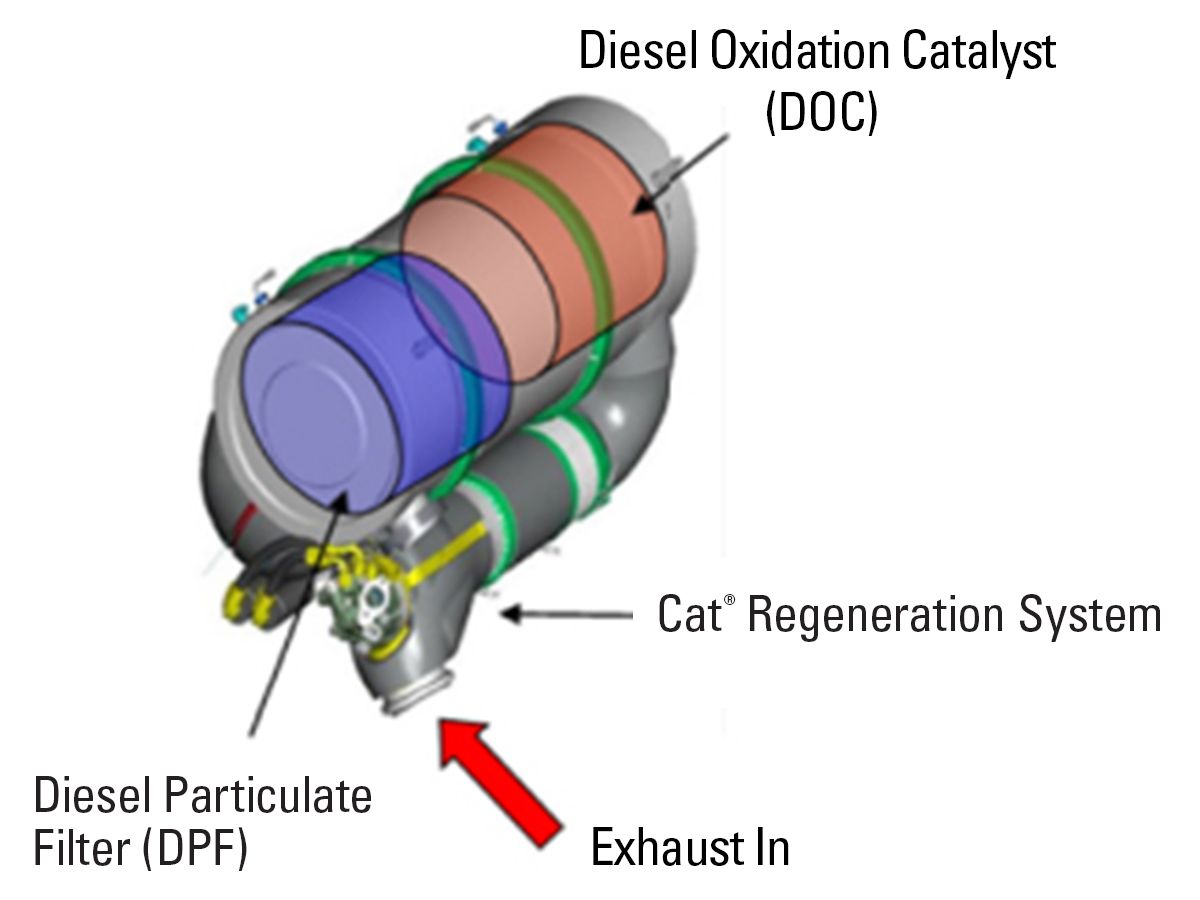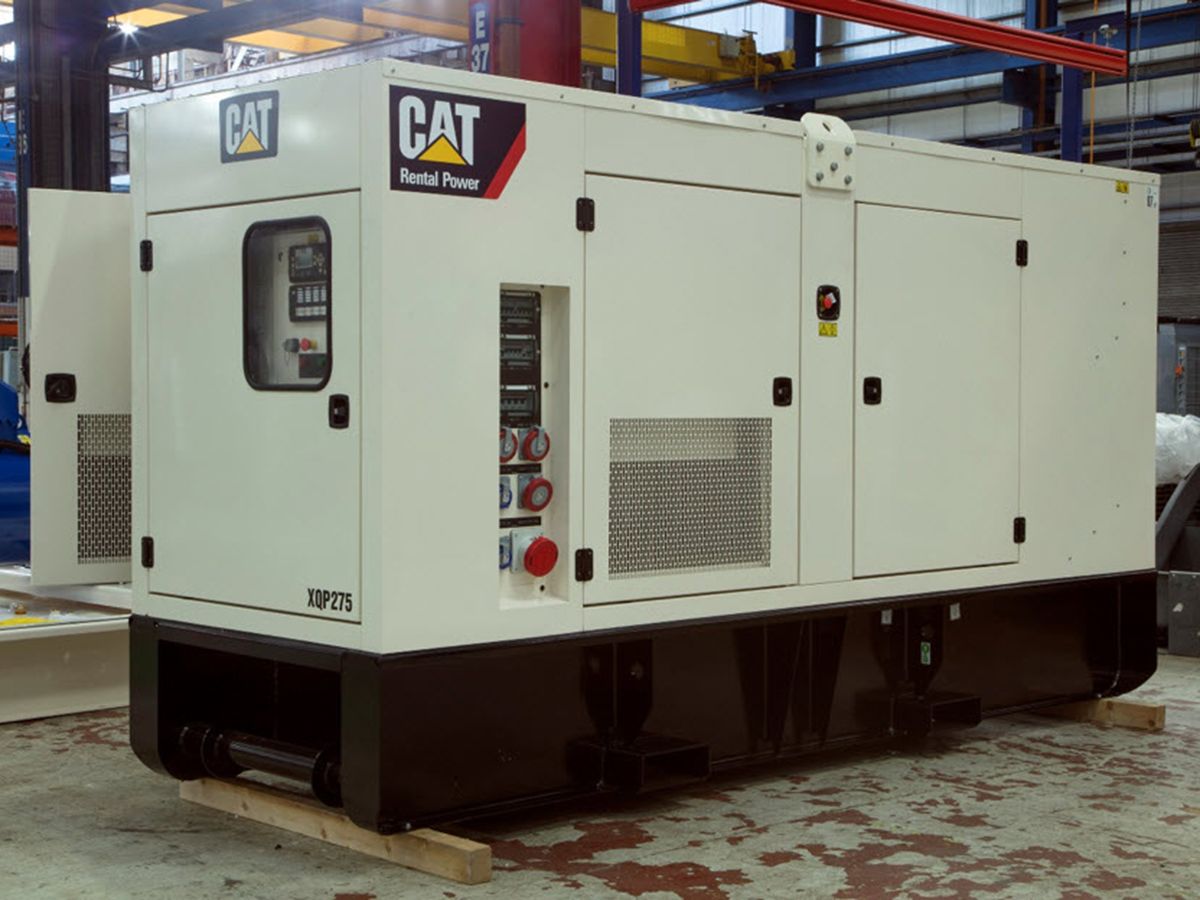Introduction
Established by the European Commission, emission standards for engines used in new non-road mobile machinery (NRMM) have been gradually introduced to limit harmful substances in engine exhaust gas including carbon monoxide (CO), hydrocarbons (HC), particulate matter (PM), and nitrogen oxides (NOx). The most recent standard governing mobile generator sets, Regulation (EU) 2016/1628 moves the European Union (EU) from Stage IIIA to EU Stage V. This standard poses a new set of challenges triggered by the world’s most stringent PM limits on mobile diesel generator sets. EU Stage V also extends the scope to a wider range of engine types and sizes, regulating engine outputs greater than 560 kW for the first time.
Despite potential unknowns caused by Brexit, these regulations will go into effect on January 1, 2019 for all engines below 56 kW and above 130 kW. For engines in the 56 to 130 kW range, the effective date is January 1, 2020. These regulations are applicable to prime or standby power in mobile applications throughout Europe including drill rigs, construction wheel loaders, bulldozers, highway excavators, forklift trucks, aerial lifts, mobile cranes and other non-road equipment.
To help Cat® Rental Power mobile generator customers with a successful transition, Caterpillar will continue to offer EU Stage IIIA transition engines for up to 18 months after EU Stage V goes into effect. Meanwhile, Caterpillar will begin phasing in a complete range of mobile generator sets to meet these new requirements, with all available Cat mobile generators meeting Stage V emission standards by 2021.
CATERPILLAR’S APPROACH TO DPF TECHNOLOGY
The changes occurring because of EU Stage V, along with newly proposed particle number (PN) limits, effectively require the use of diesel particulate filters (DPF) to reduce emissions to compliance levels for engines in this range. The need for this additional hardware, combined with a significantly greater level of complexity in the engine design, requires a fully integrated solution tested for optimal performance and usability.
At very high pressures, electric common rail applications deliver fuel to electronically controlled injectors. This process produces a very fine diesel spray resulting in miniscule soot particulates which pose potential health risks. While this type of system enables complete control over the combustion process and allows for thermal management of aftertreatment systems, the particulates must be managed to meet emissions standards.
A DPF filtration system is designed to reduce PM, including soot, from the exhaust of a diesel engine. A series of alternately blocked channels forces the exhaust gas to flow through the channel walls where the particulates are physically captured in the filter.
Many rental generator applications have low load factors or utilize oversized equipment because of limited information on the customer’s load profile. If the soot rate is greater than the passive regeneration rate from the hot exhaust gas, a DPF will accumulate PM due to the low exhaust temperatures experienced during low load operation. This results in increased back pressure on the engine. As back pressure increases, eventually the particulates must be removed from the DPF through a process known as regeneration.
Exhaust temperatures are increased to above 302°C (575°F) to facilitate regeneration of the DPF. Manufacturers differ on the method of achieving these elevated exhaust temperatures.
Caterpillar’s approach to DPF employs proprietary active regeneration technology. The Cat® Regeneration System (CRS) periodically introduces a small amount of fuel into the DPF to burn off soot.
By handling the regeneration processes internally with intelligent measurement of the DPF soot level and on-package thermal management, the high-speed system works without any interaction from the operator. This allows all Cat XQ rental generator sets fitted with DPF systems the flexibility to be used in any application and any environment.
The CRS is a safe, computer-controlled system utilizing a closed combustion chamber similar to gas-burning home furnaces. Regeneration will only take place when the system determines the soot in the DPF has reached a level where regeneration is required. Then a small amount of diesel fuel is combusted upstream of the DPF, increasing the exhaust temperature to the point where the soot in the DPF will oxidize and burn off.
Ideal for low-load and cold-climate environments, the CRS provides precise measurement and control – reducing fuel burned during regeneration. The CRS reduces overall fuel consumption with a simple, low cost and low maintenance solution.
TRANSITION PLAN TO REDUCE COST, COMPLEXITY
Caterpillar will begin phasing in a complete range of mobile generator sets to meet these new requirements, with all available Cat mobile generators meeting EU Stage V emission standards by 2021. EU Stage V engines require additional hardware, along with a significantly greater level of complexity and costs – posing new challenges for the power rental market.
In the years following EU Stage V, rental rates are expected to increase in order for rental companies to maintain a similar return on investment as previous emission tiers. To help customers ease into Stage V changes, Caterpillar is following the transition scheme outlined in EU Regulation 2016/1628. This allows OEMs to manufacture the previous emission tier mobile generator set for 18 months after the Stage V effective date. It also provides a six-month accommodation to allow the generator set to be placed on the market.
By taking advantage of the availability of Stage IIIA transition products allowed under the Stage V regulation, fleets can maintain lower rental rates for their customers and reduce overhead. In contrast, early adopters of EU Stage V-compliant machines will benefit from rental business in highly regulated spaces such as large cities. Whichever avenue a fleet chooses, Caterpillar can help navigate a strategy to reduce cost and complexities.
ADDITIONAL RESTRICTIONS – RoHS COMPLIANCE
In addition, all Cat mobile generators, including the transition products, will meet the new Restriction of Hazardous Substances (RoHS) compliance standard effective July 2019. RoHS prohibits ten hazardous substances currently found in electrical and electronic components that are restricted by the EU. The RoHS directive was introduced by the EU in 2002, with the most recent phase requiring all mobile products – including generator sets – placed on the market beginning in July 2019 to be in compliance.
EXPERIENCE WITH HIGHLY REGULATED PRODUCTS
Caterpillar is well-versed in evolving emission standards throughout Europe and North America, and has guided machine and generator set customers through every phase of regulation evolution. Our line of rental power solutions that meet Tier 4 Final standards set by the United States Environmental Protection Agency includes a range of products that meet stringent regulations while improving fuel efficiency and optimizing productivity when compared with the previous emission tier packages for rental operations in North America.
Through our unique position as both the engine supplier and generator set packager, Caterpillar will ensure all EU Stage V packages our customers receive are fully integrated and tested for optimal performance and usability.
To locate the Cat dealer nearest you visit: https://www.cat.com/en_ID/support/dealer-locator.html.
ABOUT
About The Author
Gareth Osborne is a Production Definition Manager with Cat® Rental Power.
About Caterpillar
For more than 90 years, Caterpillar Inc. has been making sustainable progress possible and driving positive change on every continent. Customers turn to Caterpillar to help them develop infrastructure, energy and natural resource assets. With 2017 sales and revenues of $45.462 billion, Caterpillar is the world’s leading manufacturer of construction and mining equipment, diesel and natural gas engines, industrial gas turbines and diesel-electric locomotives. The company principally operates through its three primary segments – Construction Industries, Resource Industries and Energy & Transportation – and also provides financing and related services through its Financial Products segment. For more information, visit caterpillar.com. To connect with us on social media, visit caterpillar.com/social-media.



